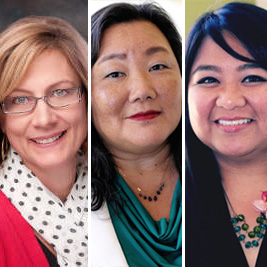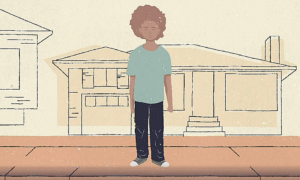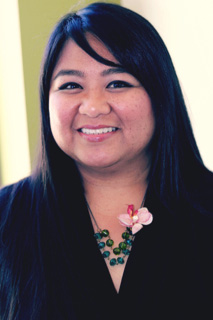
Jessie Domingo Salu
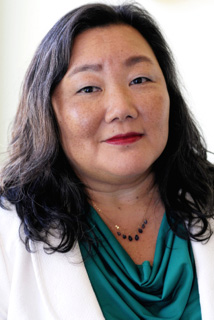
Jeannette Pai-Espinosa
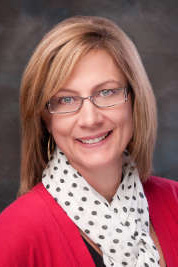
Barbara Burton
Tamara walked through the door of Florence Crittenton in Helena, Mont., 16 years old and pregnant. At age 5, she had entered the foster care system after watching the police take her father away. Before coming to Crittenton she had cycled through 10 foster care placements in those 11 years. Her last two placements ended when she ran away before she could be “thrown away,” Tamara said.
Data on young mothers in foster care is sorely lacking, including such basic facts as how many there are across the country.
However, the Midwest Evaluation of the Adult Functioning of Former Foster Youth conducted by Chapin Hall Center for Children found that the rate of teen pregnancy and childbearing is much higher for teens who are or have been a part of the foster care system than for other teens. The study also found that by age 19, girls who had been in foster care were 2½ times more likely than were girls nationwide to have become pregnant and nearly three times more likely to have a child.
The reasons for these higher birth rates are complex. Trauma and the search for unconditional love, safety and security are frequently at the root, and addressing it is vital to ensuring healthy outcomes for these families.
Additionally, in 2012, The National Crittenton Foundation and the Crittenton family of agencies collected data to illustrate the extent of young mothers’ exposure to adverse childhood experiences. The Adverse Childhood Experiences (ACE) data provides us with insight into the impact of childhood exposure to abuse, neglect and household dysfunction. Scores range from 0-10 with, as scores increase, increasing likelihood of further victimization, chronic disease, addiction, poor work performance and more — including a reduction of life expectancy.
The data from 18 Crittenton agencies around the country revealed that 61 percent of young moms were exposed to four or more adverse experiences before age 18. In comparison, the national ACE/CDC study found that 15 percent of women surveyed had scores of four or more.
Additionally, 63 percent of young mothers involved with the child welfare system had scores of four or more, and nearly 10 percent had a score of 10. Understanding ACE helps to more clearly define the challenges and root causes of the involvement of girls and young moms in the foster care system.
Despite it all, young mothers in foster care like Tamara, and their children, can heal from their trauma and live healthy, successful lives with the right support services and caring individuals.
Tamara is living proof of this. At Crittenton, she gradually began to realize she had an opportunity to embrace change. She was focused and worked hard, caught up in school, gave birth to a beautiful little boy, graduated from high school and later attended college.
At Crittenton, Tamara was able to address the trauma she experienced during her childhood. Virtually every adult she knew had let her down, and her ability to trust adults was severely shaken. Her relationship with trusted staff at Crittenton allowed her to begin discussing feelings about being hurt by those she trusted to care for her. Tamara stated her baby was never going to know how it felt to be abandoned, and she, with support, delivered on that promise.
Best practices for young mothers in a residential foster care setting should be gender- and trauma-focused and include a broad spectrum of practical skills trainings, as well as therapeutic interventions such as trauma-focused cognitive behavioral therapy (CBT), co-occurring treatment and dialectical behavior therapy (DBT). Family systems that include the extended family are useful when family members are available.
Family support services should address a wide range of programming and linkages to community resources, such as prenatal support and education, preventative health care, parental skill building, nutritional education, academic achievement supports and education, career development, mentoring and independent living skills. Also, teaching and modeling child attachment should be inherent in all aspects of the program, 24/7.
Additionally, community-based support, particularly aftercare for parenting foster youth transitioning out of care, is crucial to long-term success but is poorly supported. Home visiting programs offer hope but can fall short of providing the network necessary to raise healthy families for those youth without kin.
Using at least a two-generation approach is critical because young mothers do not exist alone; they are a part of a dyad and must be supported as a dyad in their treatment. Services should include opportunities for young parents to bond with their children during pregnancy and throughout the first three years.
The programs should address three key elements simultaneously: treatment for the adolescent, support and care for the infant, and the relationship between parent and child. Without any of these components, the family unit is destined to fail. Moreover, the importance of early childhood education and intervention, including high-quality child care for infants and toddlers, is an often missed essential component that delivers serious return on investment.
So what can we do as a society to support young mothers in foster care?
- Understand the context of a young mother’s life and not judge them based on their past.
- Advocate for a continuum of services that address the comprehensive needs of young parents including residential programs and community-based support.
- Understand parenting support doesn’t end for teen parents at 18. In fact, many youth need the most support from 18 to 21.
- Address the need for systems change to provide family-based services from a two-generation approach, rather than adapting services to fit within existing systems of mental health treatment, juvenile justice or child welfare.
- Demand to know the facts about the number of young mothers in foster care in your state.
As for Tamara, through focused therapy, support and hard work at Crittenton, she was able to address her childhood experiences. Today she is a successful nurse and a married mother of three beautiful children. Life isn’t perfect, but it is stable. And her children have always known she was there.
Barbara Burton is executive director at Florence Crittenton in Helena, Mont. Jeannette Pai-Espinosa is president at The National Crittenton Foundation. Jessie Domingo Salu is vice president at The National Crittenton Foundation.


